Test Drive of the New 718 Spider: How Does It Sound? Ride Comfort? Handling?
公開日:
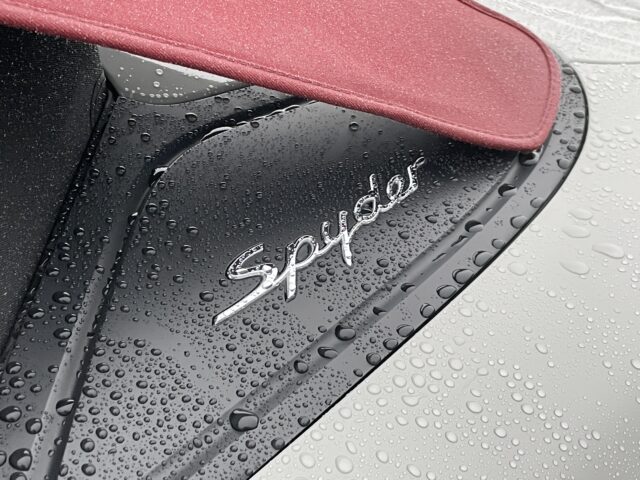
Test Drive of the New 718 Spider
Since its release, the 718 Spider has gradually started appearing here and there on the streets. This time, I finally had the opportunity to take it for a test drive.

The 718 Spider I drove this time featured a Crayon body color with a red soft top and the Spider Classic interior package—a truly classic and irresistible combination. Personally, this design alone makes me want one. It’s simply stunning. Among current Porsches, this is my favorite design.
This particular model was a 6MT right-hand drive with a GPF (Gasoline Particulate Filter) installed.
Starting the Engine and Taking Off
The engine start-up sound is quite powerful. The naturally aspirated 4.0-liter engine roars to life with a “Vroom!” The idle sound closely resembles that of the 992. This makes sense since the engine block is shared; the 992’s engine has had its turbo removed and displacement increased to create this engine.
This 420PS engine shares displacement with the GT3’s but its characteristics are completely different.
It delivers strong torque even in practical driving ranges, and for the manual version, the maximum torque of 420Nm is available in a flat torque curve from 5,000 to 6,800 rpm. (The PDK version produces 430Nm at 5,500 rpm.)
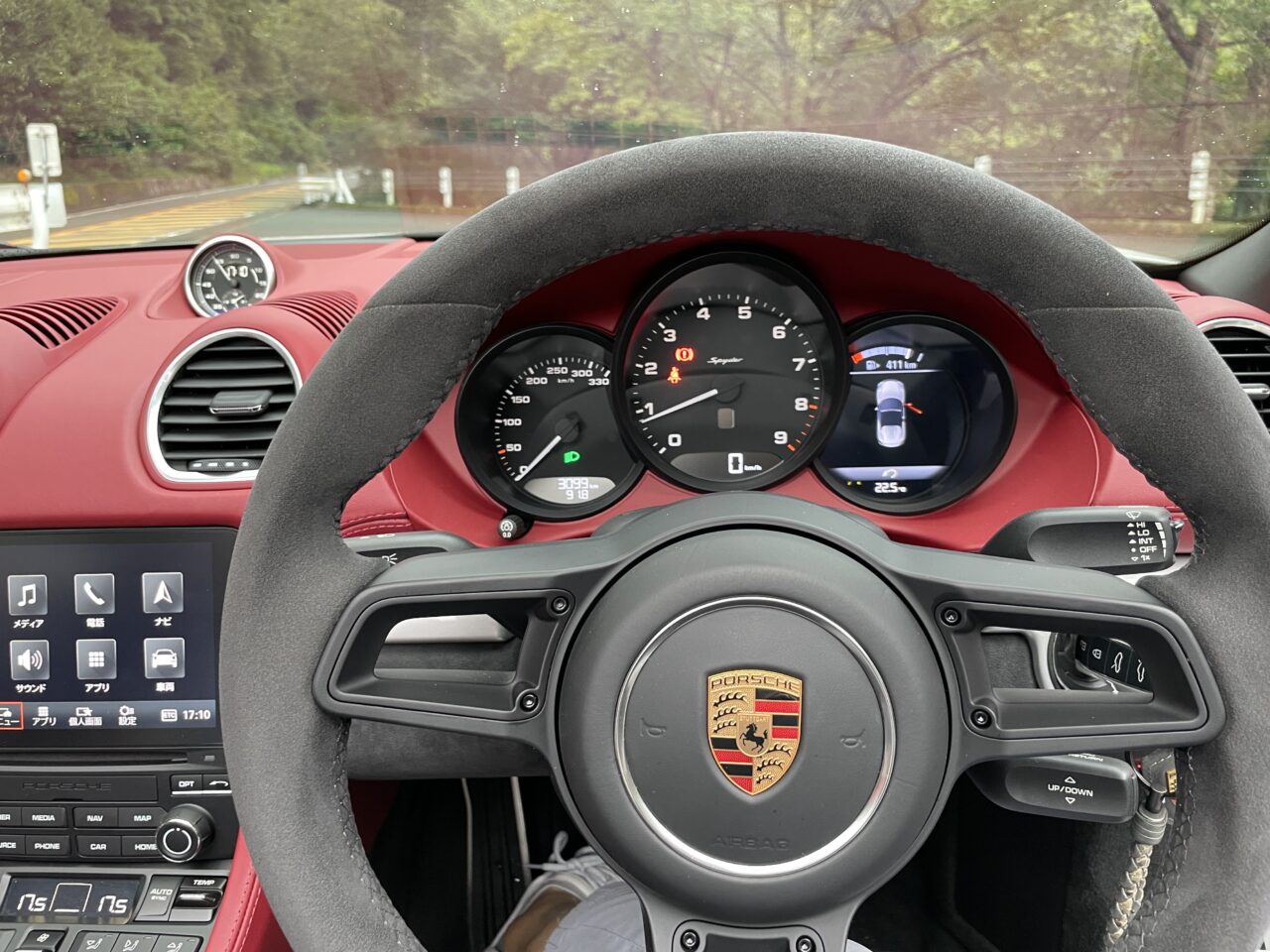
This makes the feeling from launch to building speed very easy to handle. I wrote in my GTS 4.0 test drive review that this engine is very easy to drive, and the Spider is no exception—there’s no peakiness or difficulty in handling.
It’s truly an engine characteristic suited for everyday use.
Shift Feel
Combined with the practical torque characteristics, the shift feel is excellent. The short-throw shifter, shared with the GT3 and GT4, engages smoothly with just a flick of the wrist. There’s no stiffness or difficulty selecting gears at any point.
You can always select the desired gear perfectly and stress-free.
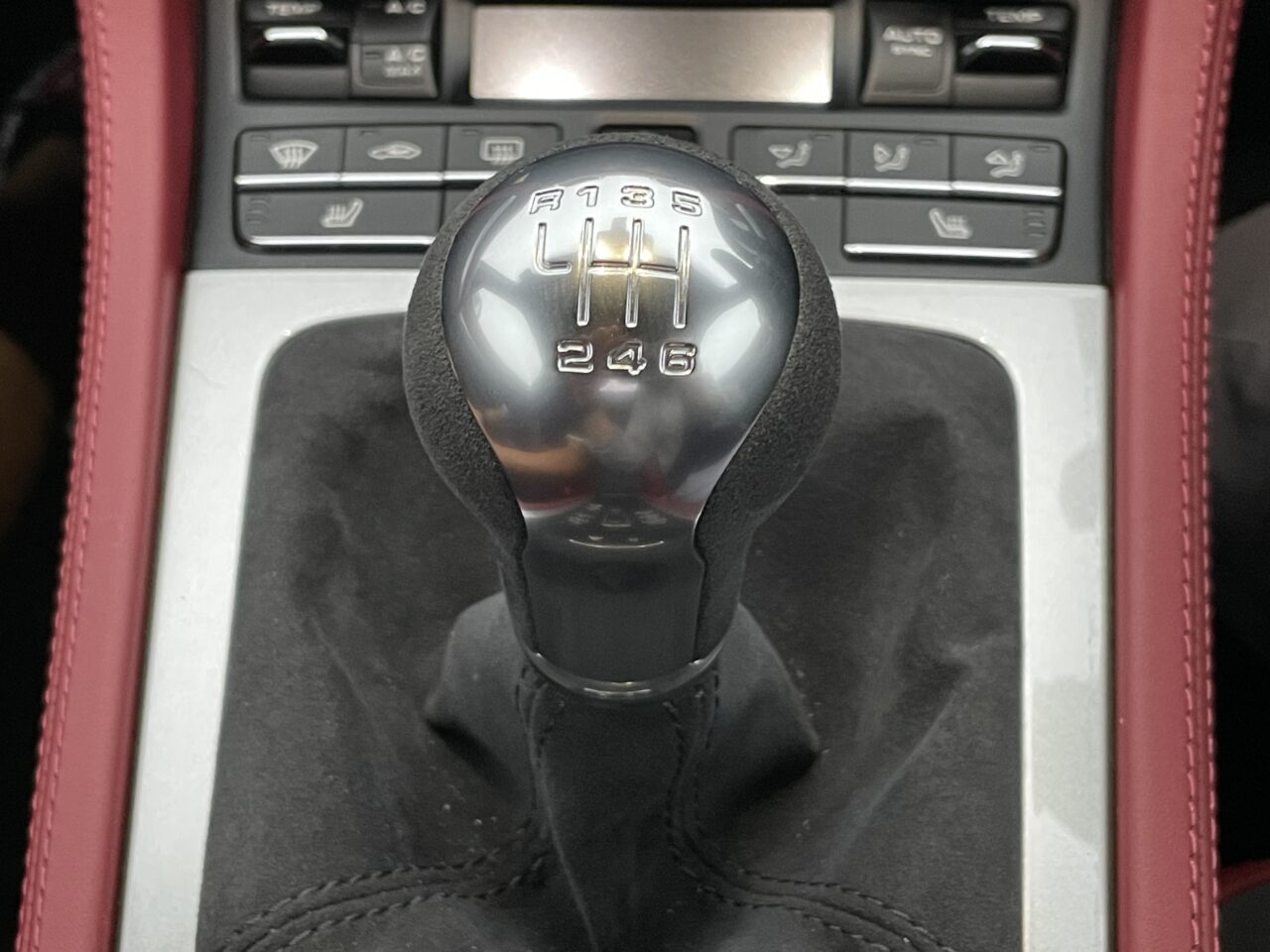
Just like with the GTS 4.0, it feels almost impossible to stall. Clutch and shift operations are so easy that once you engage the clutch and start moving, you only need to apply a slight pressure with your right foot to smoothly build speed.
I later compared it with my own 981 Boxster GTS, and the ease of launch is completely different. With the 981, you consciously have to add throttle after engaging the clutch, but with the 718 Spider and GTS 4.0, you can build speed effortlessly without really thinking about the accelerator.
Also, shifting from 1st to 2nd gear produces no shift shock even without consciously modulating the throttle. With the 981, you need to gently add throttle to smoothly transition, but the 718 Spider requires no such technique.
The dense torque and smarter engine management assist the driver.
Having experienced many manual cars, both domestic and imported, I believe the 718 Spider and GTS 4.0 manuals are among the most approachable, even for beginners. So if you’re not confident with manuals, rest assured.
Practice is needed, but you’ll likely master it fairly quickly.
What About the Engine Sound?
Now, this is probably the biggest concern for many—myself included. Many online reviews barely touch on this, so I’m sure many want to know the truth.
To start with the conclusion: it’s surprisingly quiet once you start driving. The engine sounds fierce when started, but once you engage the clutch and move off, the Spider becomes almost silent.
You might even wonder, “What happened?” as the sound volume drops to a mild level, and shifting up through 2nd, 3rd, and 4th gears around 2,000 rpm produces a quiet sound typical of a sports coupe.
Unlike the GT3, the Spider has no engine modes like Sport or Sport Plus; it’s essentially a car that’s always in Sport Plus mode.
So, there’s no change in sound depending on mode.
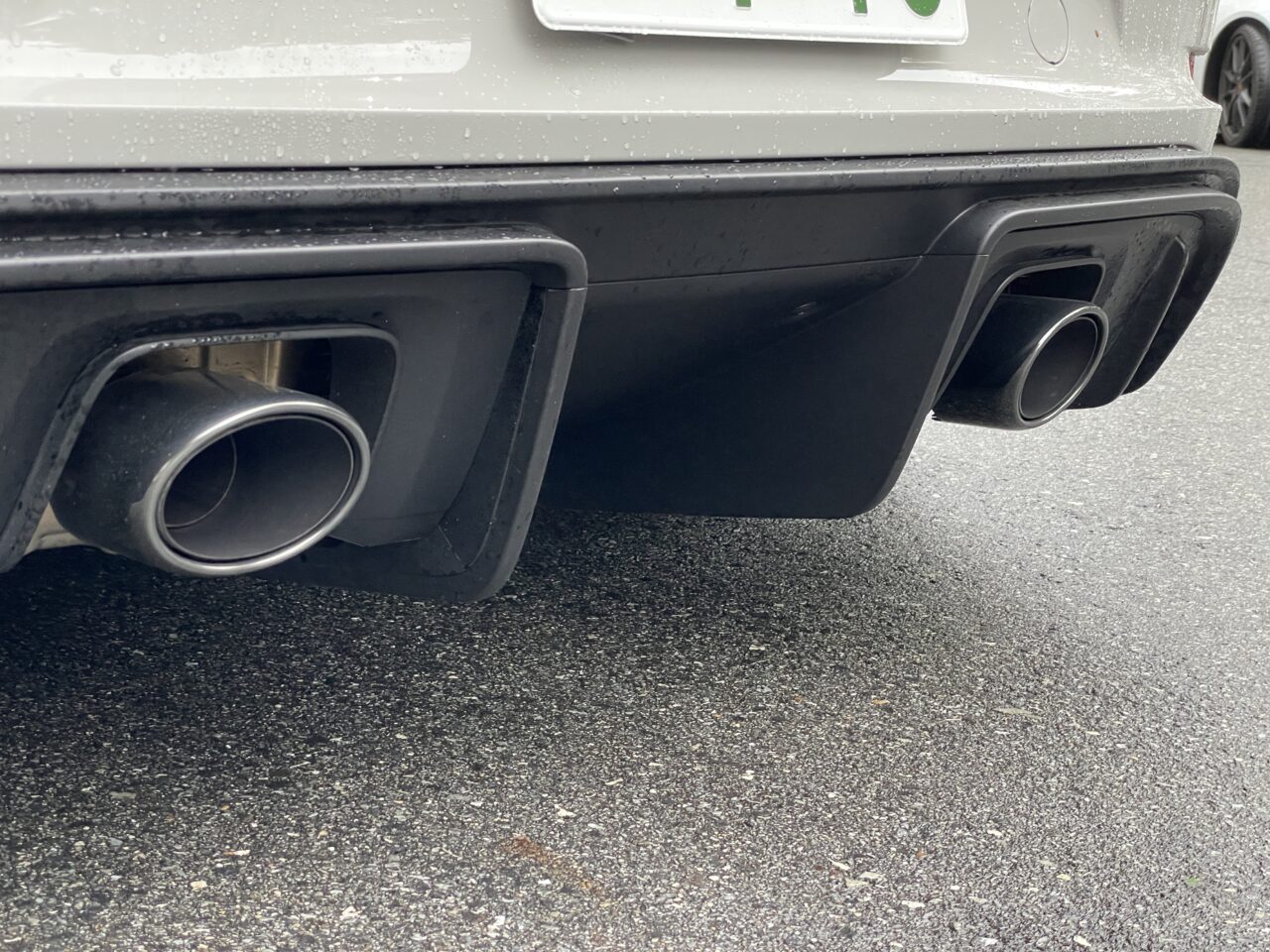
However, when you drop down one or two gears and rev the engine, the Spider’s exhaust note transforms dramatically. Around 4,000 rpm, the valves open, and it instantly becomes a loud beast.
The exhaust and engine sound at this point are magnificent.
While similar to the 992’s sound, possibly due to the larger displacement, it has a slightly deeper, richer bass tone. It’s different from the 718 four-cylinder models and lacks the four-cylinder or V8-like pulse; it’s a well-balanced six-cylinder sound. Also, there’s very little popping or burbling on throttle lift-off.
It’s hard to describe the sound quality in words, so I recommend checking out videos on YouTube. If I were to rank recent Porsches by sound depth, it would be:
718 (4-cylinder) > 718 Spider & GTS 4.0 > 992 > 991 GT3 low revs > 981 > 991 GT3 high revs
Sound preference is highly personal, so this isn’t a judgment of good or bad—just a reference for choosing your preferred Porsche sound.
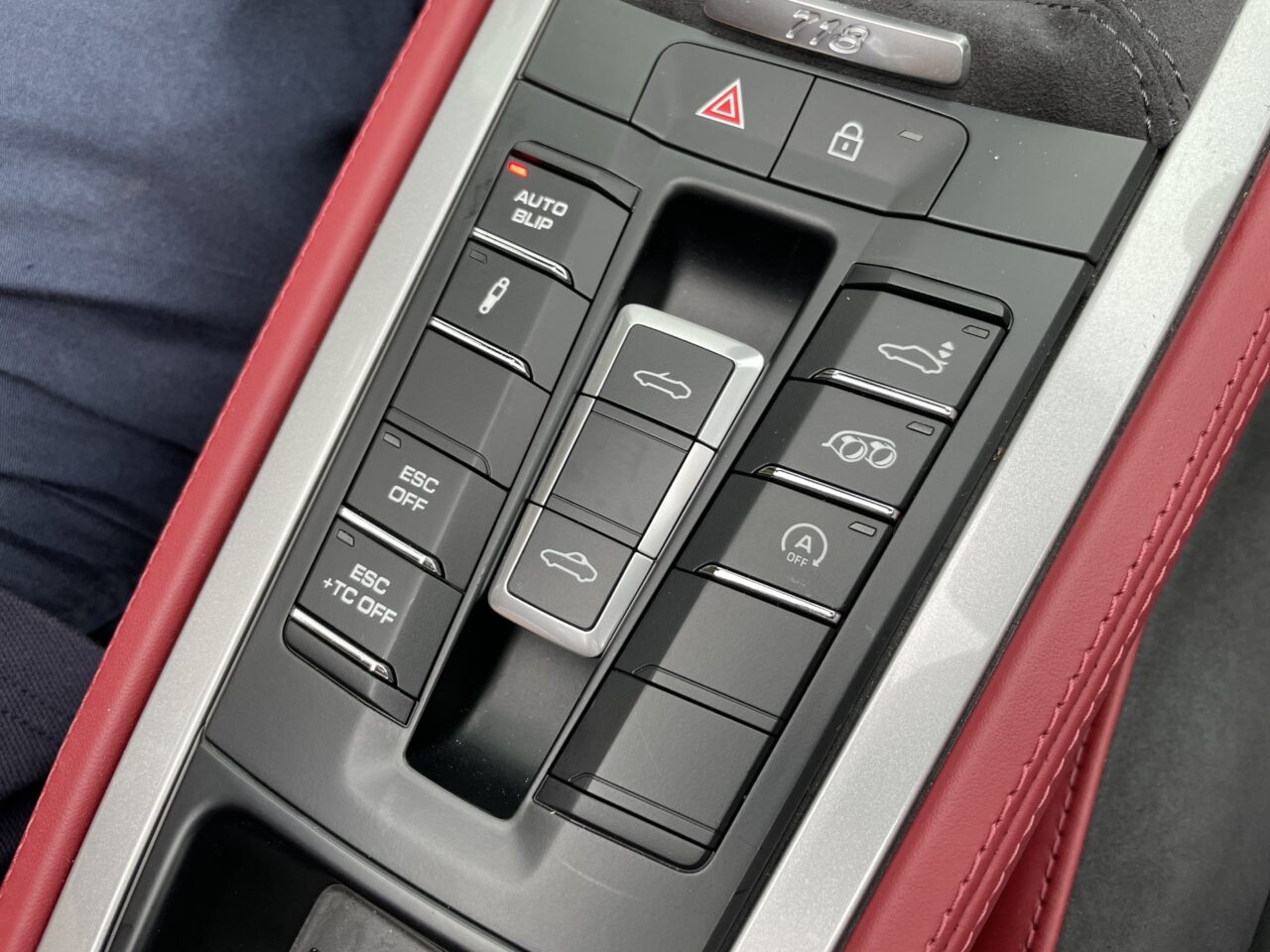
Incidentally, this car’s owner had installed a remote-controlled valve controller on the exhaust, so I was able to try it with the valves open.
The difference was huge. Even at low speeds, the exhaust sounded sporty and truly enjoyable from behind. It was a revelation how satisfying it is when the sound matches the throttle input.
Yet, it’s never too loud—conversations with passengers remain easy, and there’s no unpleasant cabin resonance.
It’s pleasant even without pushing hard. I felt the same with the GT3: when the valves are closed at low revs, you tend to push beyond 4,000 rpm to hear the sound, which is bad for the environment and can be dangerous. Having a valve controller actually encourages gentler driving, which is quite ironic.
As a side note, the owner had also driven a GPF-free model (an early import with a different part number).
He said the sound was clearer and much louder.
GPF-equipped models inevitably sound a bit muffled.
| Next page → Handling, Ride Comfort Compared to GTS 4.0, and Chassis |
このブログが気に入ったらフォローしてね!


Comment ( 0 )
Trackbacks are closed.
No comments yet.